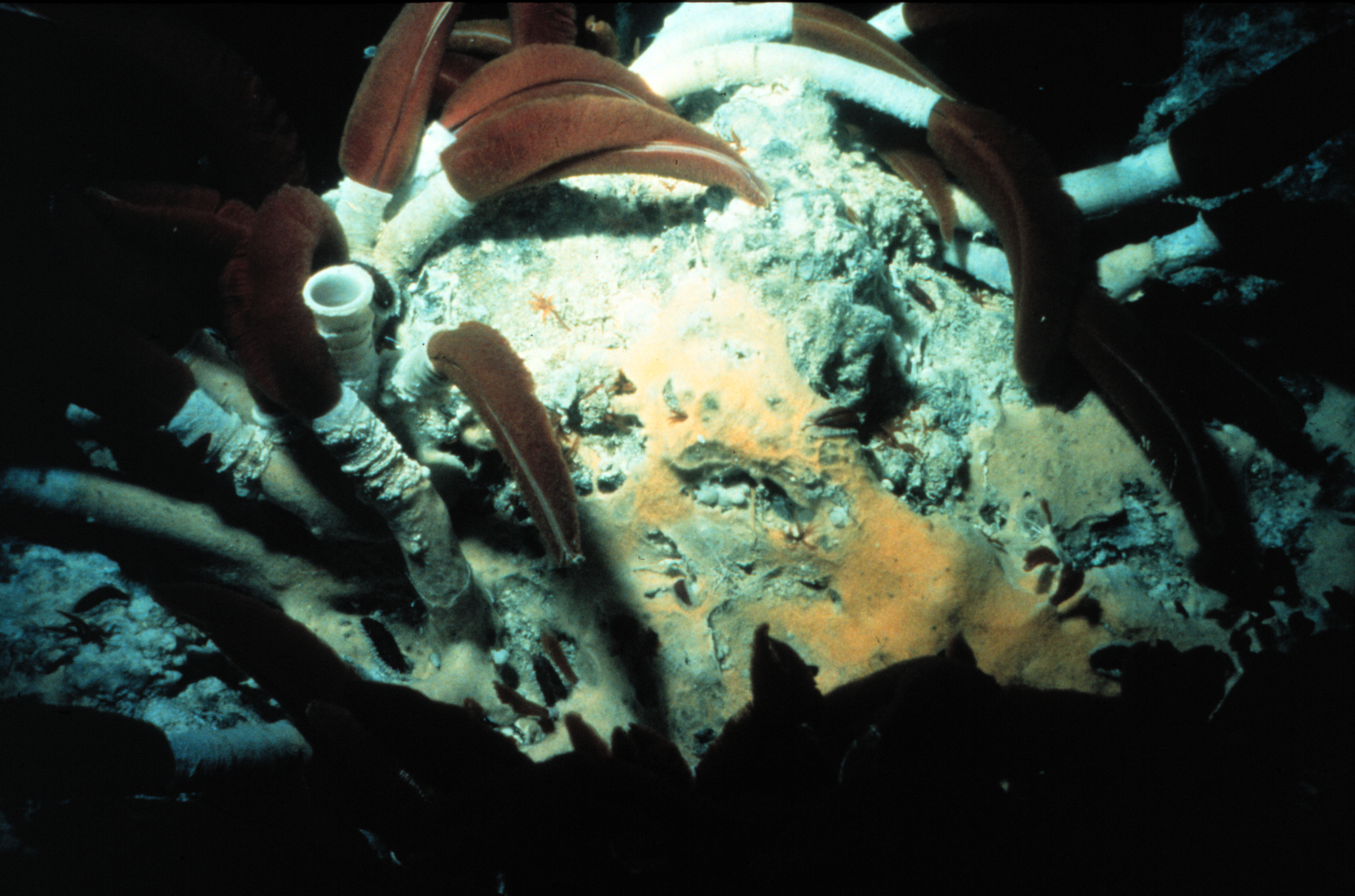- Siboglinidae
image_width = 250px
image_caption = "Riftia pachyptila "
regnum =Animal ia
phylum =Annelid a
classis = Polychaeta
ordo =Canalipalpata
familia = Siboglinidae
familia_authority =Caullery , 1914
subdivision_ranks = Genera
subdivision = See text.Siboglinidae, also known as the beard worms, is a family of
polychaete annelid worms whose members made up the former phyla Pogonophora (thegiant tube worms ) and Vestimentifera. [cite journal | title=Close phylogenetic relationship between vestimentifera (tube worms) and annelida revealed by the amino acid sequence of elongation factor-lα | url=http://www.springerlink.com/content/v0nn766n67236503/ | doi=10.1007/BF00170463 | journal=Journal of Molecular Evolution | issn=1432-1432 | volume=37 | issue=1 | month=July | year=1993 | author=Shigeaki Kojima, Tetsuo Hashimoto, Masami Hasegawa, Shigenori Murata, Suguru Ohta, Humitake Seki and Norihiro Okada | pages=66–70] [cite journal | author=Rouse G.W. |title=A cladistic analysis of Siboglinidae Caullery, 1914 (Polychaeta, Annelida): formerly the phyla Pogonophora and Vestimentifera | url=http://www.ingentaconnect.com/content/ap/zj/2001/00000132/00000001/art00263 | journal=Zoological Journal of the Linnean Society | volume=132 | issue=1 | month=May | year=2001 | pages=55–80 | doi = 10.1006/zjls.2000.0263 ] They are composed of about 100 species of vermiform creatures and live in thin tubes buried in sediments at ocean depths from 100 to 10,000 m. They can also be found in association with methane seeps, with sunken plant material or whale carcasses.Anatomy
Most are less than 1 mm in diameter but 10 to 75 cm in length. They have a complex
closed circulatory system and a well developednervous system . Their body is divided into four regions; the cephalic lobe, forepart, trunk, andopisthosoma . The anterior is called the cephalic lobe, which bears from 1 to over 200 thin branchialtentacle s, which bears tiny side branches known as pinnules. Posterior to the cephalic lobe is the short forepart, and then the elongate trunk, which bears various annuli, papillae, and ciliary tracts. Posterior to the trunk is the short metamerically segmented opisthosoma, that contains serially arranged coelomic spaces separated by septa and bears external pairedchaeta e.Vestimentiferans
Like other tube worms, vestimentiferans are marine and . "
Riftia pachyptila ", a vestimentiferan, is known only from thehydrothermal vent systems. The vestimentiferans possess an anterior first body part called the obturaculum. Their main trunk of the body bears winglike extensions, the vestimentum, from which their name is derived. Also, unlike other siboglinids that never have adigestive tract , they have one that they completely lose duringmetamorphosis . They feed primarily onsymbiotic hydrogen sulfide- or methane-oxidizingbacteria living in an internal organ, the trophosome.The first specimen was dredged from the waters of what is now
Indonesia in 1900. These specimens were given to French zoologistMaurice Caullery , who studied them for nearly 50 years.Genera in the family Siboglinidae
* "
Birsteinia "
* "Choanophorus "
* "Cyclobrachia "
* "Lamellibrachia "
* "Lamellisabella "
* "Osedax "
* "Paraescarpia "
* "Ridgeia "
* "Riftia "
* "Siboglinoides "
* "Siboglinum "
* "Volvobrachia "*
References
Wikimedia Foundation. 2010.

